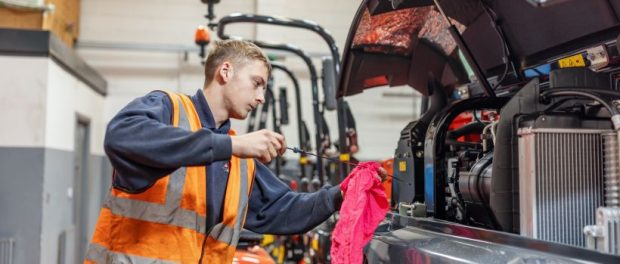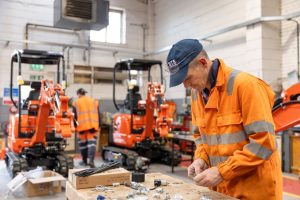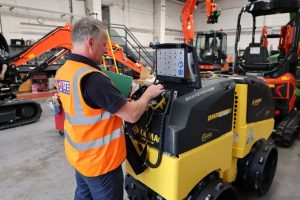Beyond the Sale: Why Aftersales Support Matters in Plant Machinery

In construction, machine performance isn’t just about horsepower or hydraulics — it’s about what happens when the machine leaves the dealership and starts work onsite. For many contractors, plant downtime can stall entire projects, costing time, money, and reputation.
While price and spec still dominate buying decisions, more businesses are starting to consider the bigger picture: how well-supported their machines will be over time. That’s why aftersales support is becoming one of the most important — and overlooked — aspects of modern fleet management.
The True Cost of Downtime
A plant machine breakdown doesn’t just mean a lost day of work. It can mean delayed site progress, standing labour, or idle equipment. Often, the challenge isn’t the failure itself, but the speed and reliability of the response.
According to industry research, a single day of unexpected downtime on a busy site can cost thousands in direct and indirect losses. And while warranties and service contracts exist, they vary widely between dealers and manufacturers — making the dealer’s infrastructure just as critical as the machine itself.
What Good Lifecycle Support Looks Like
At its core, strong aftersales support should aim to do three things:
1. Prevent unplanned downtime through planned maintenance and early fault detection
2. Respond quickly when breakdowns do happen, with mobile engineers and stocked parts
3. Extend machine life through expert servicing, refurbishment, and tailored advice
Some dealerships offer basic support. Others go further — investing in regional parts hubs, deploying on-call engineers, and building customer service into their business model. These are the services that often go unnoticed — until something goes wrong.
A Case for Proactive Maintenance
Planned maintenance and condition monitoring can help detect wear-and-tear long before it becomes critical. At BTE we can now offer service plans linked to telematics data, so machine hours and fault codes are tracked in real time.
This not only allows services to be scheduled efficiently but also gives fleet managers greater visibility over running costs and reliability — a valuable asset in a cost-sensitive market.
Parts Availability: A Hidden Differentiator
For many plant owners, the difference between a one-day fix and a week-long delay comes down to parts availability. It’s an area where dealers’ infrastructure — not just the manufacturer’s — plays a major role.
Here at BTE, we hold hundreds of fast-moving parts in stock, with same-day dispatch and dedicated logistics support. This is increasingly important as contractors aim to reduce onsite storage and lean toward just-in-time servicing.
Learning from the Field
Some construction firms have built their fleets around long-term relationships with dealers who offer strong aftersales support. For example, one Midlands-based plant hire company we spoke to noted that while several dealers offer similar machinery, only a few back it up with consistent servicing, helpful advice, and a clear plan for machine replacements.
“We realised that the real value wasn’t just in the machine — it was in how quickly issues were solved,” the company’s director shared. “That’s what keeps our fleet moving.”
Looking Ahead: Lifecycle Thinking in 2025 and Beyond
As sustainability, cost-efficiency and uptime remain central to construction operations, lifecycle thinking is likely to shape the way companies procure and maintain plant equipment. That includes not only initial spec and finance, but also refurbishment options, trade-in value, and future-proofing through technology.
Plant owners are increasingly asking not just, “What’s the price?” but also, “What happens after I buy it?”
BTE Plant Sales is continuing to invest in aftersales support — from expanding our parts network to strengthening our mobile service fleet — to ensure our customers stay up and running, beyond the sale.
Key Takeaways for Buyers
· Look beyond the price — aftersales support can make or break machine ROI
· Ask about service coverage — how fast can engineers be onsite?
· Check parts strategy — are key components stocked locally?
· Explore lifecycle options — including servicing, rebuilds, and end-of-life planning
· Think long term — reliable support keeps your projects moving



